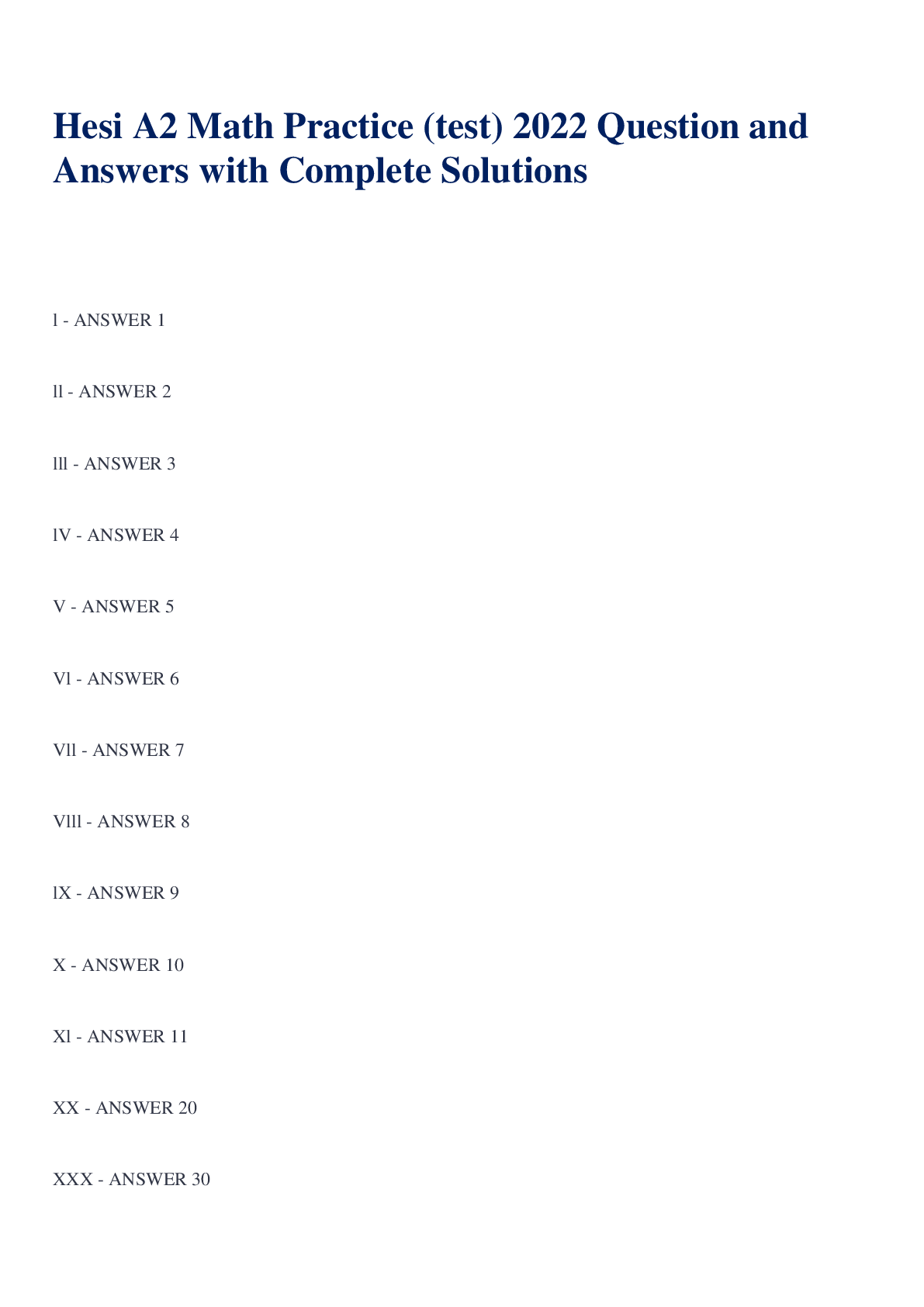*NURSING > HESI > HESI A2 Critical Thinking Questions and Answers With Rationale, 100% Correct. A Graded (All)
HESI A2 Critical Thinking Questions and Answers With Rationale, 100% Correct. A Graded
Document Content and Description Below
HESI A2 Critical Thinking Questions and Answers With Rationale, 100% Correct. A Graded.1. The nurse is working in the emergency department (ED) of a children's medical center. Which client should the ... nurse assess first? 1. The 1-month-old infant who has developed colic and is crying. 2. The 2-year-old toddler who was bitten by another child at the day-care center. 3. The 6-year-old school-age child who was hit by a car while riding a bicycle. 4. The 14-year-old adolescent whose mother suspects her child is sexually active. Rationale Correct - 3-The child hit by a car should be assessed first because he or she may have life- threatening injuries that must be assessed and treated promptly. 2. The 8-year-old client diagnosed with a vaso-occlusive sickle cell crisis is complaining of a severe headache. Which intervention should the nurse implement first? 1. Administer 6 L of oxygen via nasal cannula. 2. Assess the client's neurological status. 3. Administer a narcotic analgesic by intravenous push (IVP). 4. Increase the client's intravenous (IV) rate. Rationale Correct - 2-Because the client is complaining of a headache, the nurse should first rule out cerebrovascular accident (CVA) by assess- ing the client's neurological status and then determine whether it is a headache that can be treated with medication. 3. The 6-year-old client who has undergone abdominal surgery is attempting to make a pinwheel spin by blowing on it with the nurse's assistance. The child starts crying because the pinwheel won't spin. Which action should the nurse implement first? 1. Praise the child for the attempt to make the pinwheel spin. 2. Notify the respiratory therapist to implement incentive spirometry. 3. Encourage the child to turn from side to side and cough. 4. Demonstrate how to make the pinwheel spin by blowing on it. Rationale Correct -1. The nurse should always praise the child for attempts at cooperation even if the child did not accomplish what the nurse asked. 4. The nurse is caring for clients on the pediatric medical unit. Which client should the nurse assess first? 1. The child diagnosed with type 1 diabetes who has a blood glucose level of 180 mg/dL. 2. The child diagnosed with pneumonia who is coughing and has a temperature of 100°F. 3. The child diagnosed with gastroenteritis who has a potassium (K+) level of 3.9 mEq/L. 4. The child diagnosed with cystic fibrosis who has a pulse oximeter reading of 90%. Rationale Correct - 4. A pulse oximeter reading of less than 93% is significant and indicates hypoxia, which is life threatening; therefore, this child should be assessed first. 5. The nurse has received the a.m. shift report for clients on a pediatric unit. Which medication should the nurse administer first? 1. The third dose of the aminoglycoside antibiotic to the child diagnosed with methicillin-resistant Staphylococcus aureus (MRSA). 2. The IVP steroid methylprednisolone (Solu-Medrol) to the child diagnosed with asthma. 3. The sliding scale insulin to the child diagnosed with type 1 diabetes mellitus. 4. The stimulant methylphenidate (Ritalin) to a child diagnosed with attention deficit-hyperactivity disorder (ADHD). Rationale Correct - 3-Sliding scale insulin is ordered ac, which is before meals; therefore, this medication must be administered first after receiving the a.m. shift report. 4-Routine medications have a 1-hour leeway before and after the scheduled time; therefore, this medication does not have to be adminis- tered first. 6. The nurse enters the client's room and realizes the 9-month-old infant is not breath- ing. Which interventions should the nurse implement? Prioritize the nurse's actions from first (1) to last (5). 1. Perform cardiac compression 30:2. 2. Check the infant's brachial pulse. 3. Administer two puffs to the infant. 4. Determine unresponsiveness. 5. Open the infant's airway. Rationale Correct Answer: 4, 5, 3, 2, 1 4. The nurse must first determine the infant's responsiveness by thumping the baby's feet. 5. The nurse should then open the child's airway using the head-tilt chin-lift tech- nique, with care taken not to hyperextend the neck. Then the nurse should look, listen, and feel for respirations. 3. The nurse then administers quick puffs of air while covering the child's mouth and nose, preferably with a rescue mask. 2. The nurse should determine whether the infant has a pulse by checking the brachial artery. 1. If the infant has no pulse, the nurse should begin chest compressions using two fingers at a rate of 30:2. [Show More]
Last updated: 1 year ago
Preview 1 out of 15 pages

Reviews( 0 )
Document information
Connected school, study & course
About the document
Uploaded On
Nov 28, 2020
Number of pages
15
Written in
Additional information
This document has been written for:
Uploaded
Nov 28, 2020
Downloads
0
Views
83


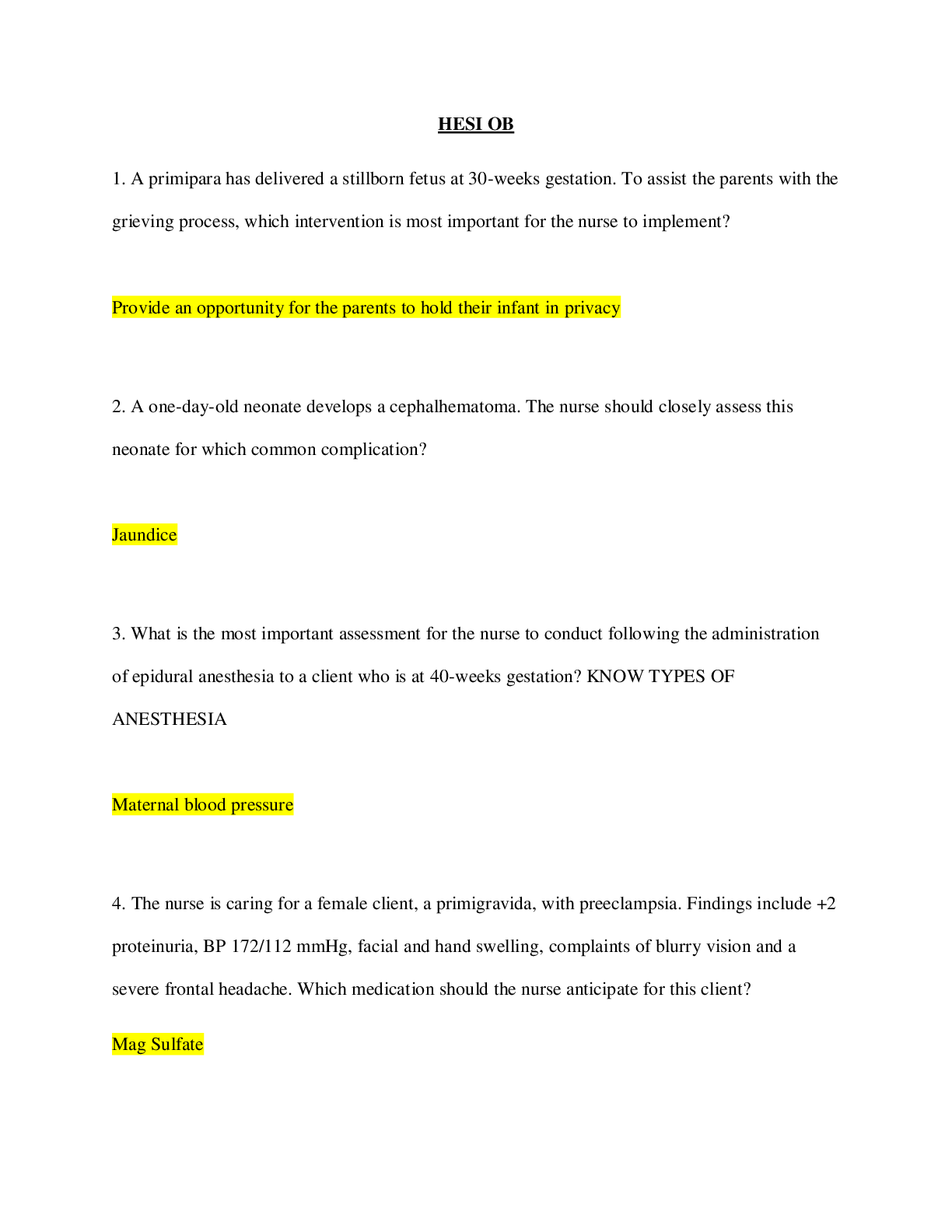
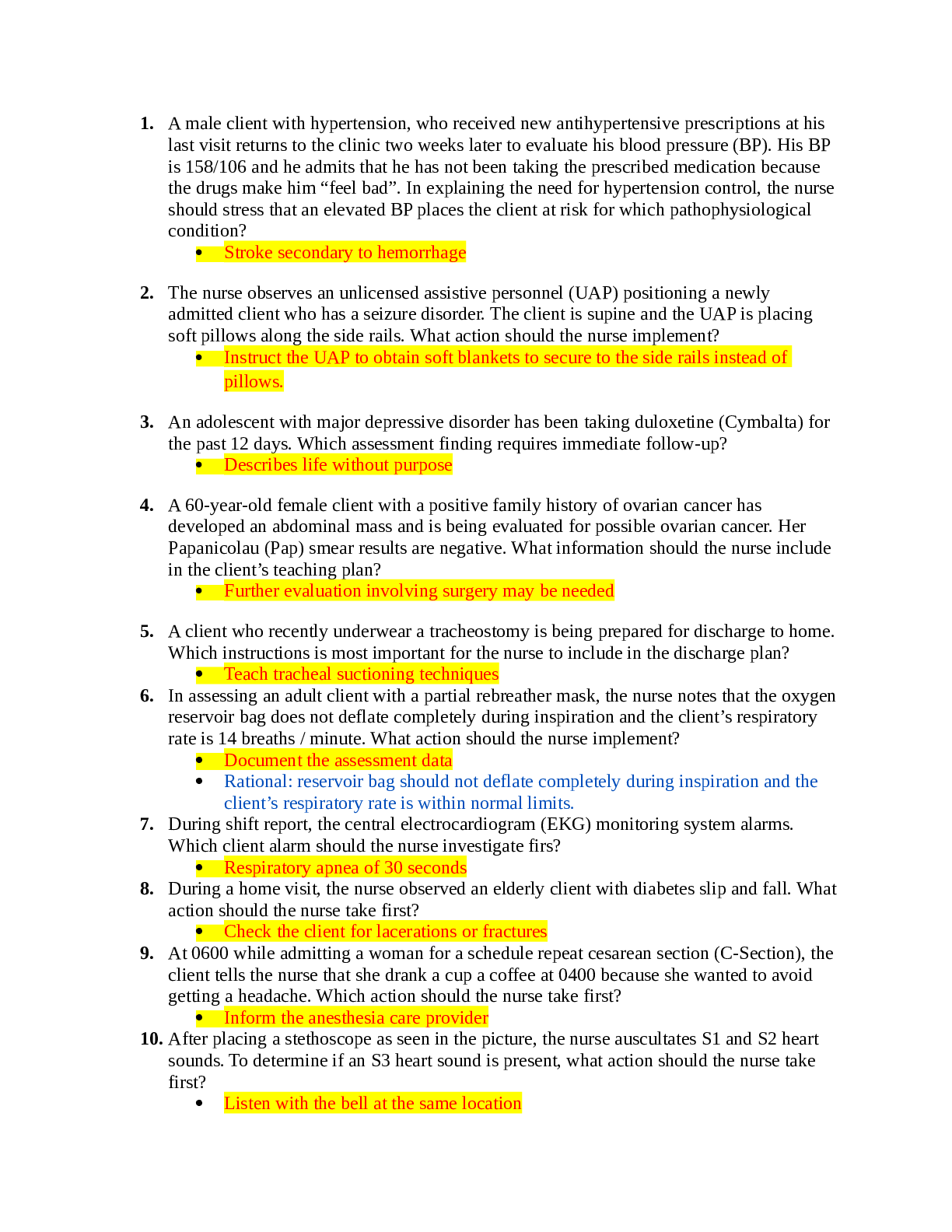


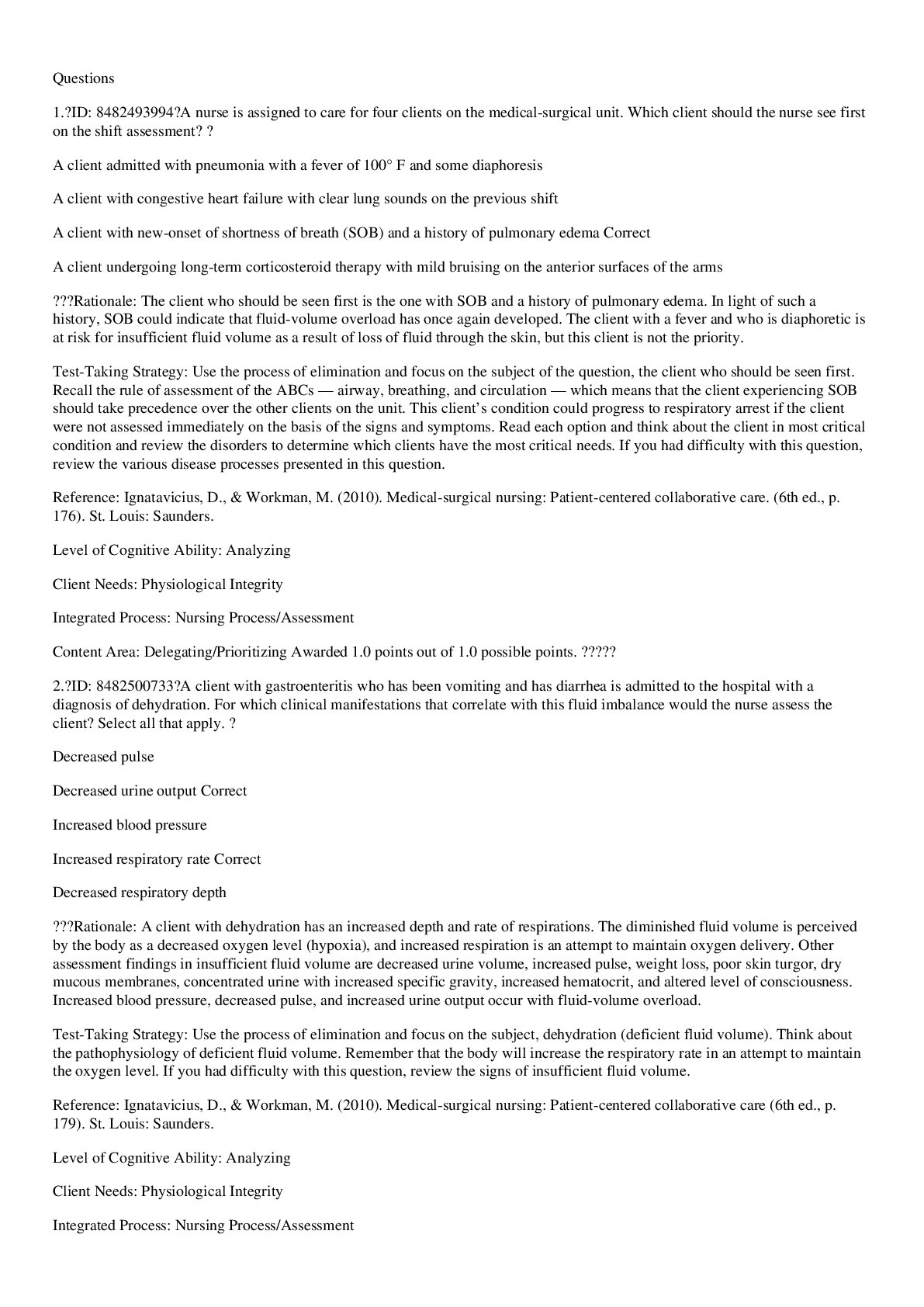

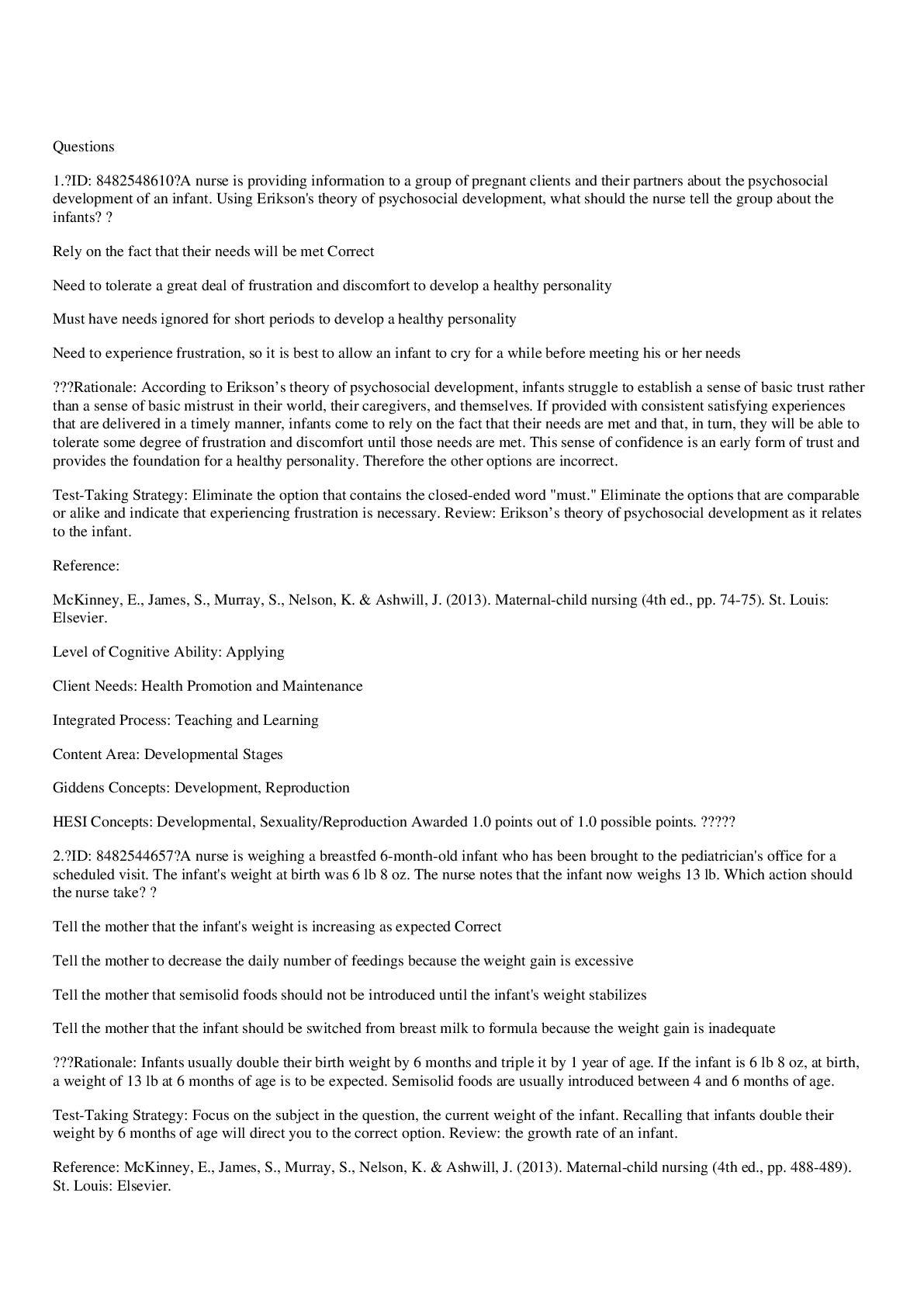
.png)




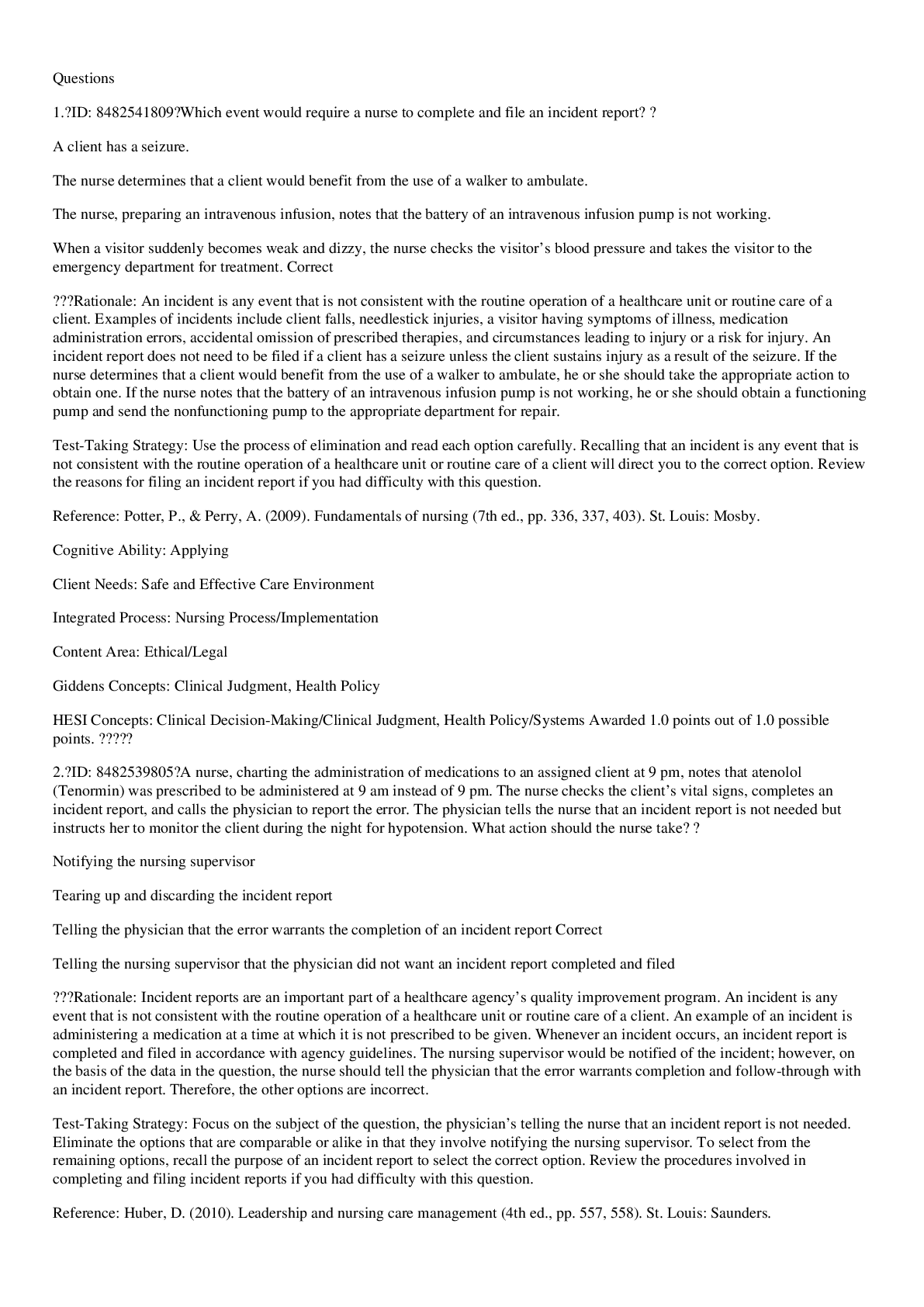

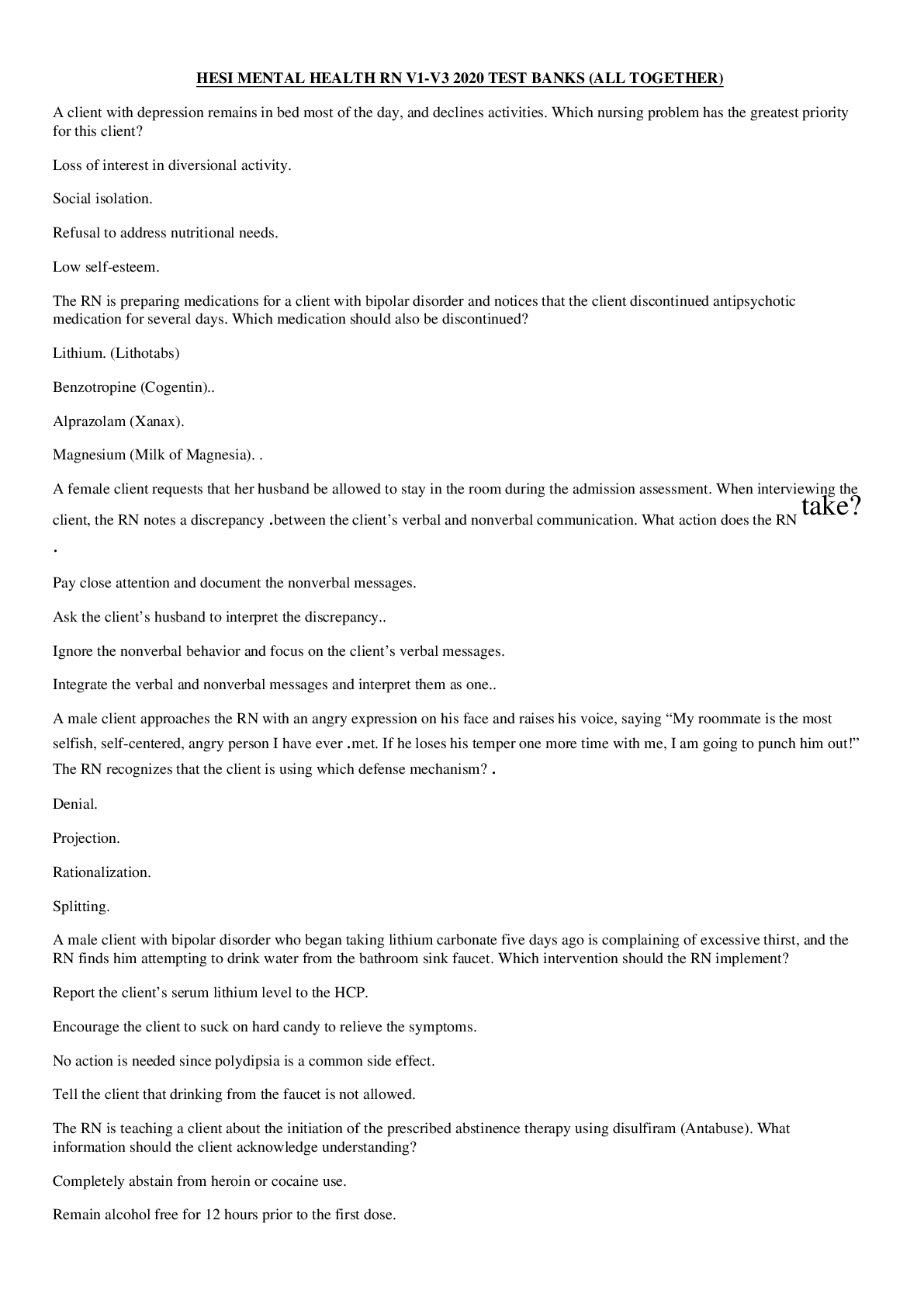

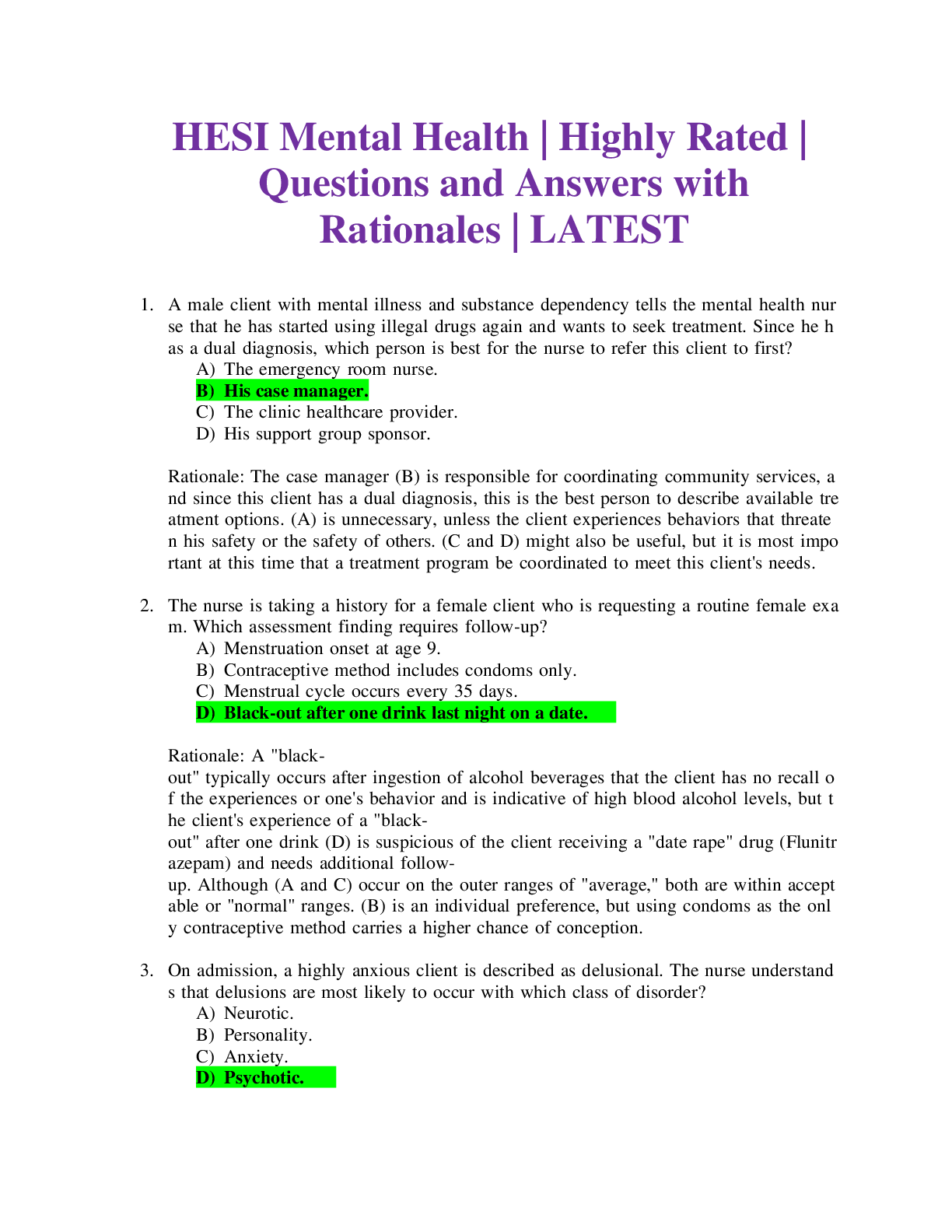

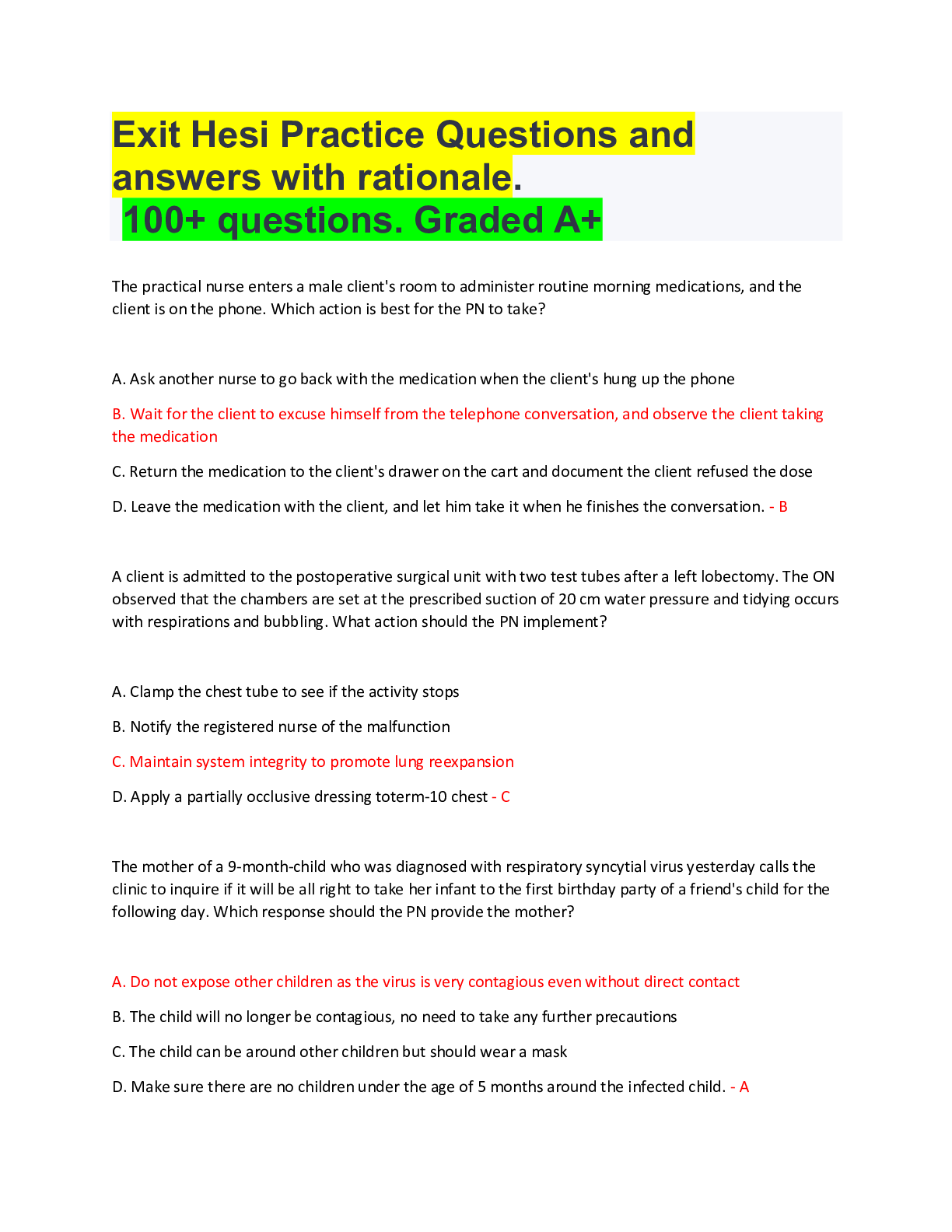
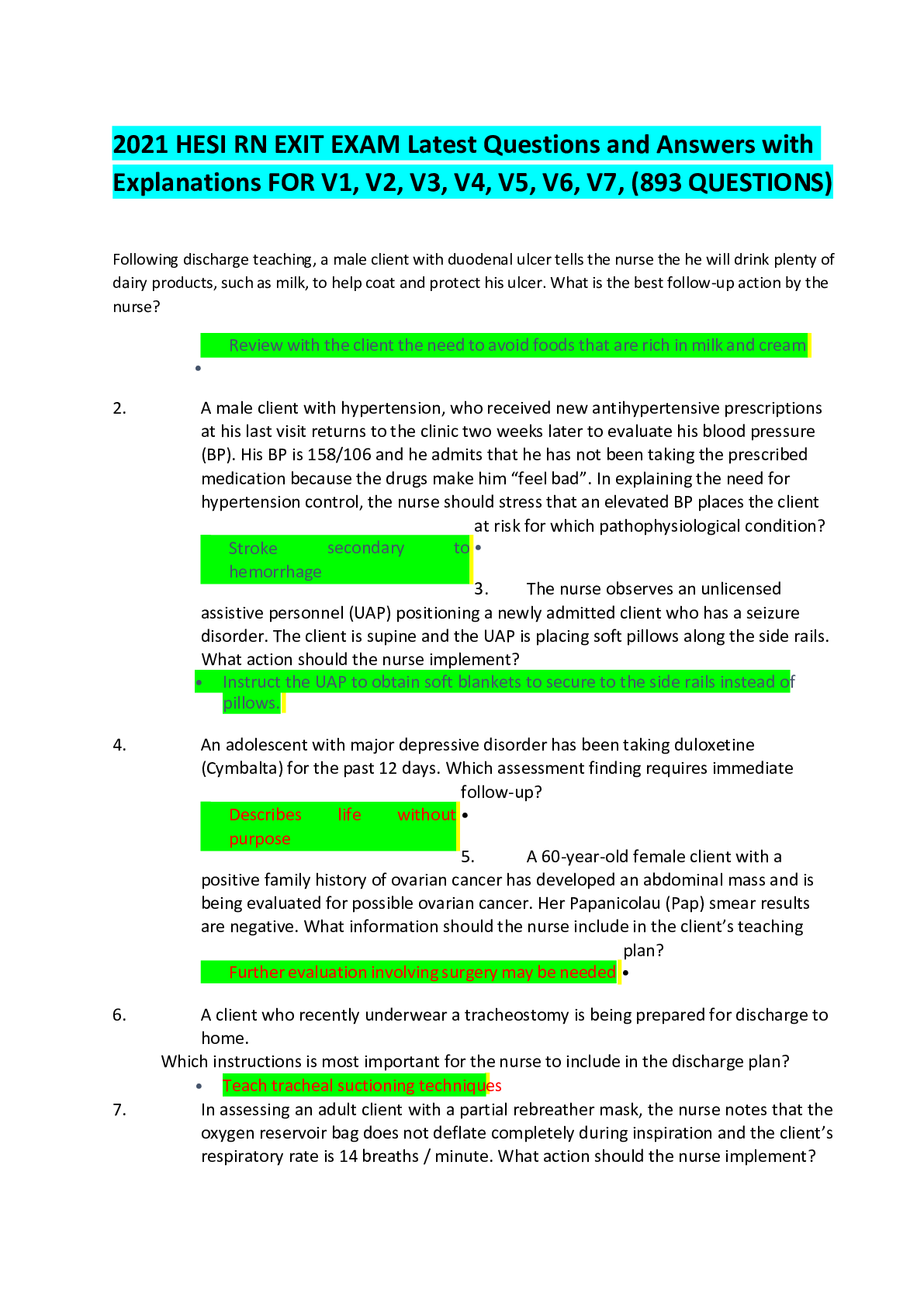
, Latest Questions and Answers with Explanations, All Correct Study Guide, Download to Score A.png)

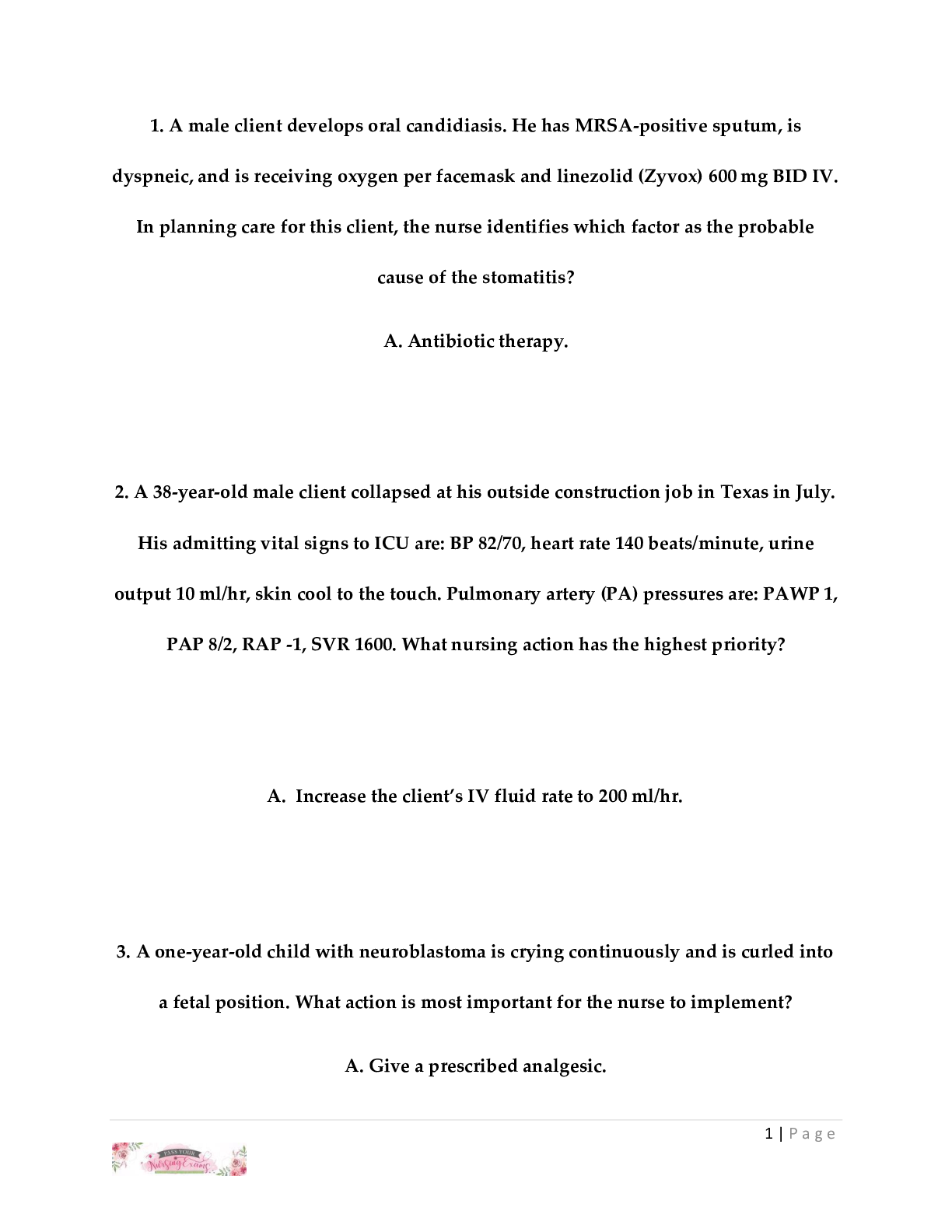


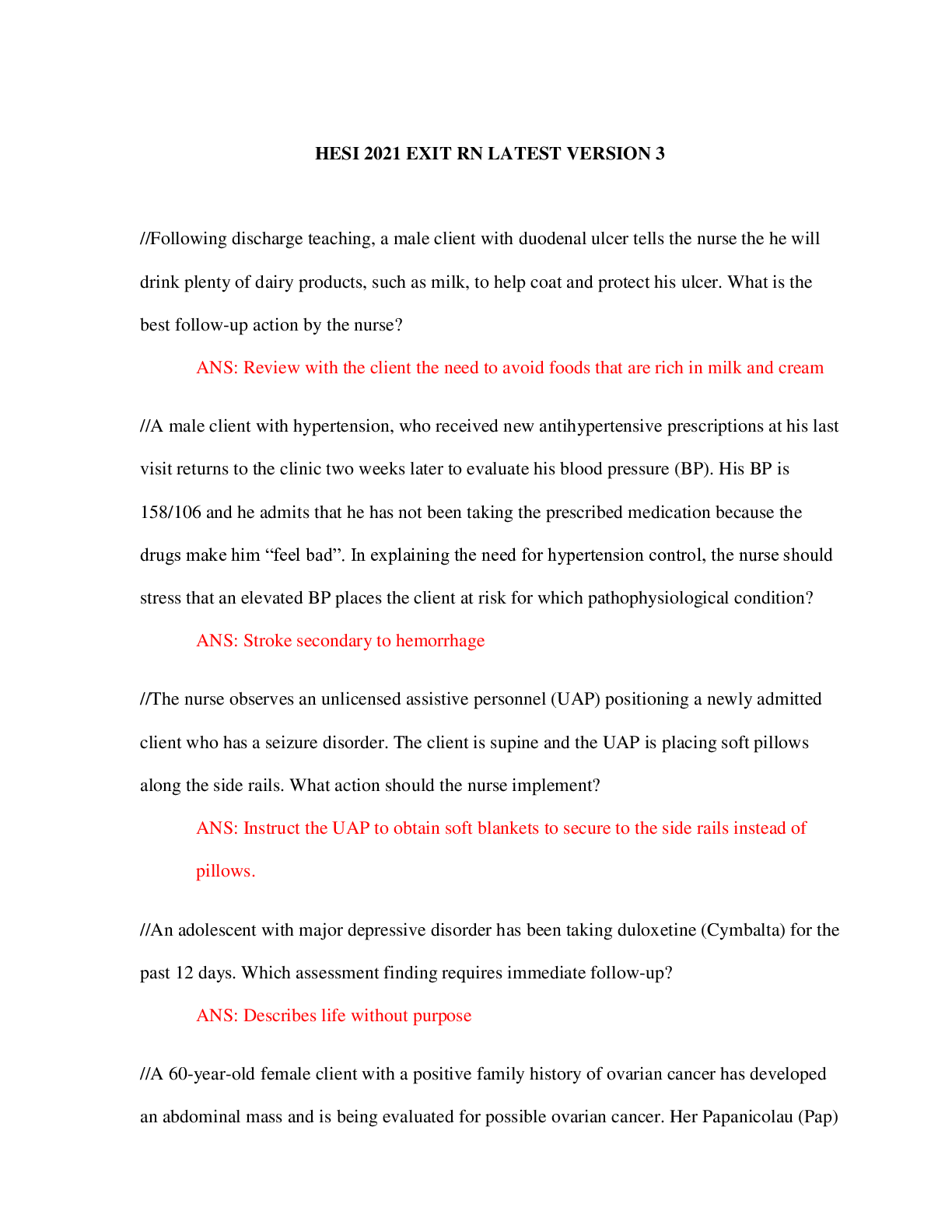





.png)
